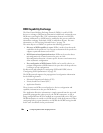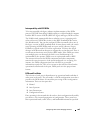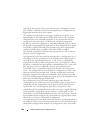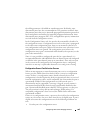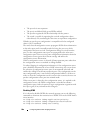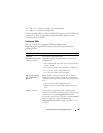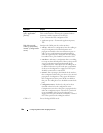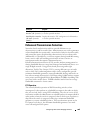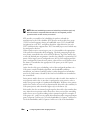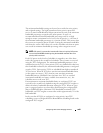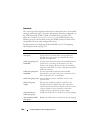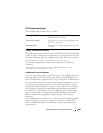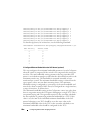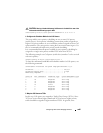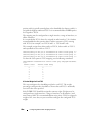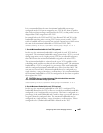
1000 Configuring Data Center Bridging Features
ETS provides a second level of scheduling for packets selected for
transmission by the CoS scheduler. ETS operates at the traffic class group
(TCG) level and supports sharing of bandwidth across TCGs, bandwidth
assignment for each TCG, and queue discipline (drop behavior) for each
TCG. N4000 switches support three TCGs internally, up to two of which may
be configured as lossless.
When a packet arrives on an ingress port, it is forwarded to the appropriate
CoS queue based upon the dot1p mapping. The dot1p mapping maps the
user priority contained in the received VLAN Priority Tag to the traffic class
or uses the default port assignment. A traffic class identifies a particular CoS
queue. If the ingress port is configured to use 802.1p CoS mapping and the
port is configured to trust the user priority value in the received frame, then
the frame is forwarded to the appropriate CoS queue per its 802.1p user
priority value.
At the first level of egress scheduling, each of the configured attributes of a
CoS queue, namely scheduler algorithm, min-bandwidth and drop
mechanism, are honored, and the packet is either dropped or forwarded to
next level. Only frames selected by the first level scheduler are forwarded to
the second level.
Strict priority traffic classes are serviced first in order of traffic class number. A
strict priority traffic class is one that is configured as strict priority or has a
traffic class group weight of 0 (unlimited bandwidth). Within a strict priority
traffic class, frames are serviced (as determined by the traffic class number) in
CoS queue priority order from the highest (6) to the lowest (0).
Each traffic class has an internal weight equal to the traffic class number plus
one. After the strict priority traffic classes have been serviced, the remaining
traffic classes are serviced according to their internal weight. For example, if
CoS queues 0, 1, and 2 have an equal offered load toward a congested output
port, CoS queue 2 will receive 3/6 of the bandwidth, CoS queue 1 will receive
2/6 of the bandwidth, and CoS queue 0 will receive 1/6 of the bandwidth.
NOTE: Minimum bandwidth guarantees and scheduling mechanisms apply only
when the switch is congested. When the switch is not congested, packets
egress the switch as soon as they are received.



